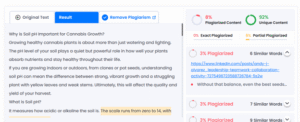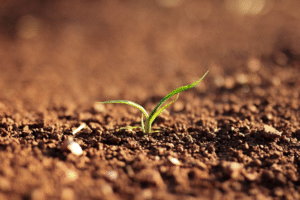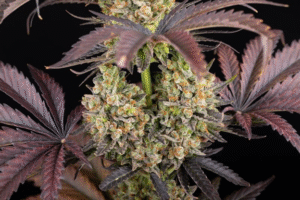 Growing healthy cannabis plants is about more than just watering and lighting. The pH level of your soil plays a quiet but powerful role in how well your plants absorb nutrients and stay healthy throughout their life.
Growing healthy cannabis plants is about more than just watering and lighting. The pH level of your soil plays a quiet but powerful role in how well your plants absorb nutrients and stay healthy throughout their life.
If you are growing indoors or outdoors, from clones or pot seeds, understanding soil pH can mean the difference between strong, vibrant growth and a struggling plant with yellow leaves and weak stems. Ultimately, this will affect the quality and yield of your harvest.
What is Soil pH?

It measures how acidic or alkaline the soil is. The scale runs from zero to 14, with seven being neutral. Numbers below seven mean the soil is acidic, while anything above is alkaline. For cannabis, the ideal range is slightly acidic — typically between 6.0 and 7.0 when growing in soil.
This range allows cannabis plants to access the widest range of nutrients. If the soil becomes too acidic or too alkaline, certain nutrients become locked out. This leads to deficiencies that show up as discoloration, stunted growth, or poor yields.
Why pH Affects Nutrient Uptake
Cannabis plants, even the ones grown from top genetics found in Barney’s seeds, need a wide range of macro and micronutrients to grow well. These include nitrogen, phosphorus, potassium, calcium, magnesium, iron, and more. But the plant can only absorb these nutrients if the level is within the right range.
Even with top-quality nutrients or organic compost, an incorrect pH can make them useless. Nutrient lockout is one of the most common causes of poor plant health, and it is often caused by a pH that has drifted too far off target.
The proper level helps the plant reach its full potential and show off its best traits in flavor, strength, and yield. Without that balance, even the best seeds can fall short.
Common Signs of Imbalance
- Yellowing leaves, especially at the bottom
- Brown spots or leaf burn
- Twisted or clawed leaf tips
- Slow or stunted growth
- Weak flowering or poor bud development.
How to Test Soil pH
You can use a digital meter, test strips, or a testing kit. Each has its pros and cons, but they all help you understand what is happening in the root zone.
It is a good habit to test the soil every couple of weeks, especially during key growth stages like early veg and mid-flower. Always test when it is damp, not dry or soaked, for the most accurate reading.
If the level is too low (acidic), you can raise it by adding garden lime or dolomite lime. If it is too high (alkaline), you can lower it using sulfur, peat moss, or certain organic composts.

Nutrient Availability by Soil pH
| pH Level | Nutrient Availability | Notes |
| 5.0–5.5 | Low availability of calcium, magnesium, and phosphorus | Risk of major deficiencies |
| 5.5–6.0 | Increased iron, zinc, and manganese absorption | Good for early veg stage |
| 6.0–6.5 | Ideal range for cannabis | Maximum nutrient availability |
| 6.5–7.0 | Slight drop in iron and manganese | Still generally safe |
| 7.0+ | Lockout of phosphorus and micronutrients | Plants may stop growing |
pH and Organic Growing
Even though organic systems rely on microbes and natural matter, these microbes work best within a certain range. Organic growers often use compost teas, worm castings, and other inputs that help balance pH naturally.
In living setups, the biology often self-regulates the level, but it still helps to check occasionally. Too much of one type of input can shift the balance, so even organic growers should stay aware.
How to Keep pH Stable
- Use balanced water, ideally between 6.0 and 7.0
- Avoid overfeeding with chemical nutrients, which can alter pH
- Add organic matter like compost or worm castings to buffer possible shifts
- Flush the soil occasionally with clean water to reset nutrient buildup
- Monitor runoff water for signs of drifts.
Understanding the pH levels is not the flashiest part of cannabis growing, but it is one of the most important. Healthy soil equals healthy roots, and that means stronger plants, bigger yields, and better buds.
From seedling to harvest, a stable level keeps your plant on the right path. It is a small detail with a big impact, and once you learn to manage it, your grow will only get better over time.





